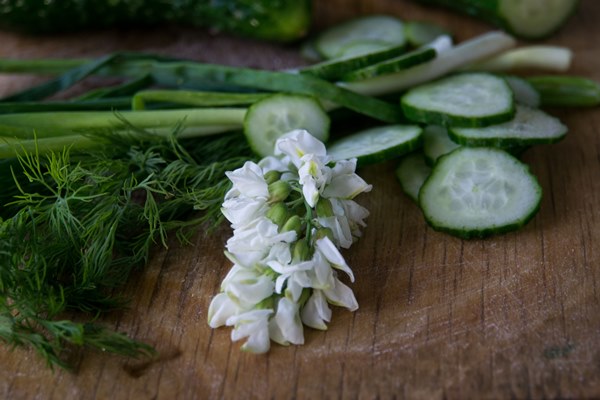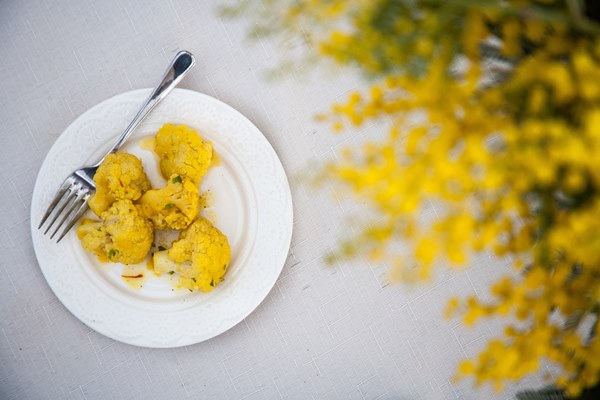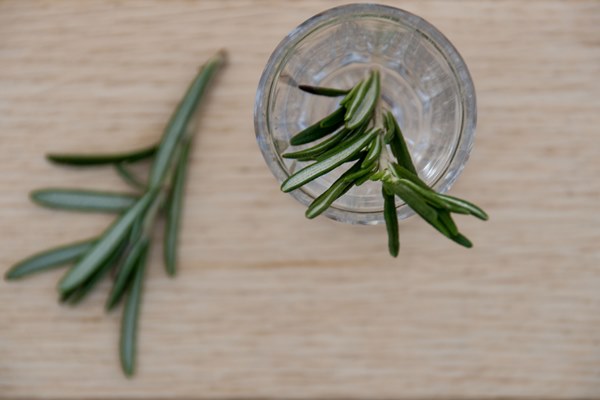White Acacia and Cucumber Salad : Edible Flowers
While mimosa makes me think of the last days of winter in Provence, white acacia flowers evoke late spring. It’s not only the sweet scent that appeals to me, but also the taste. Beignets de fleurs d’acacia, acacia flower fritters, are a seasonal treat, a crisp confection dusted with powdered sugar. The acacia season is fleeting, but it overlaps with that of rose de mai, so when I visit Grasse for the harvest, I try to time it to taste the beignets.

What I call white acacia is really a black locust tree (robinia pseudoacacia), a common plant in both Europe and the United States, blooming in April-May, depending on the region. I’ll continue calling it white acacia, because that’s the name most familiar to me–and besides, it’s prettier. Whatever you call it, it’s edible, and the flowers taste like sugar snap peas, but sweeter and more delicate. Since it’s an invasive plant, one might as well forage for it and eat it.




















Klaas in Perfume To Brighten Up Your Spring Days: I just discovered Le Jardin de Monsieur Li! Such a lovely, zingy jasmine! I am not much of a floral guy, but this perfume is such a treat! Spring in… April 19, 2024 at 3:36pm